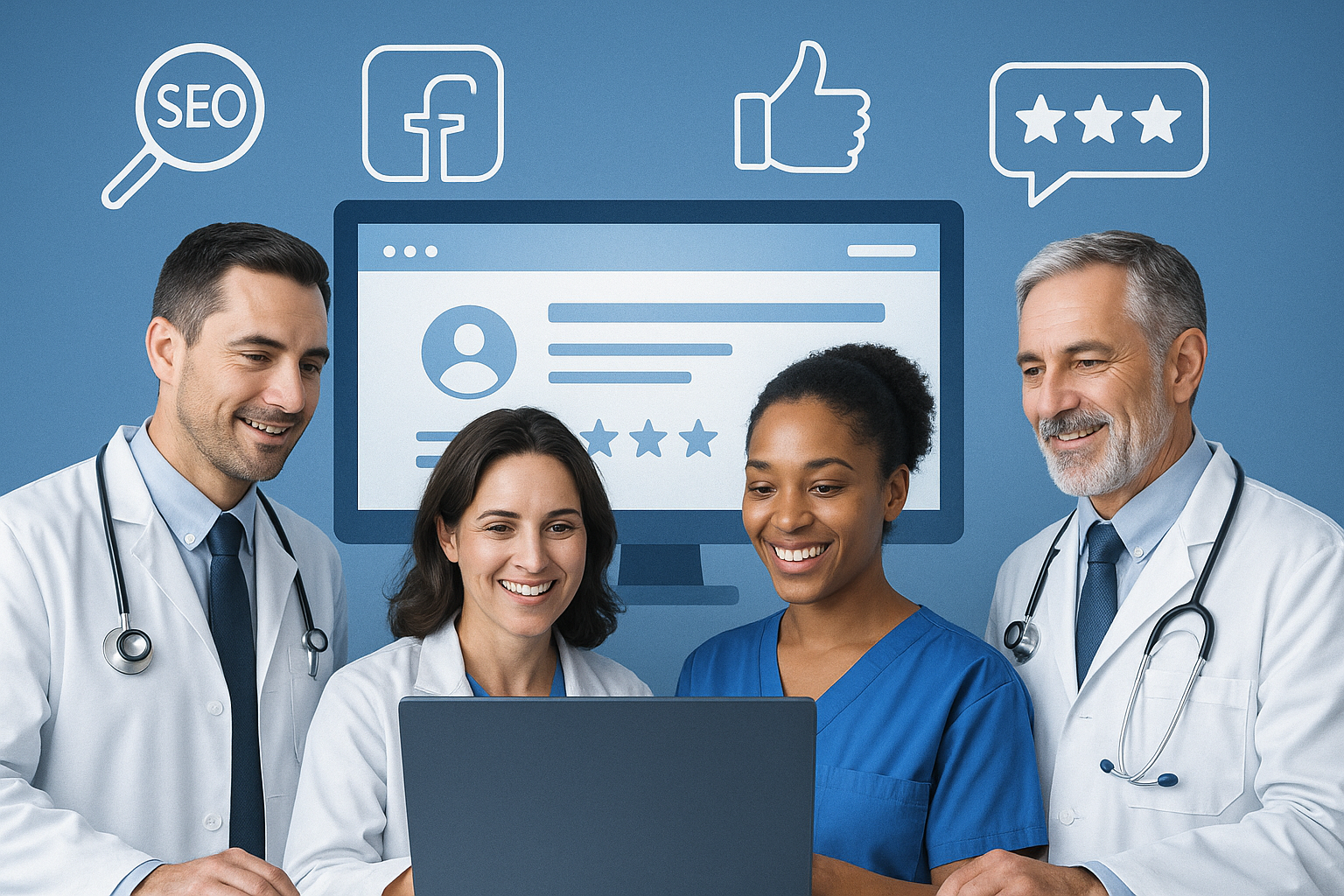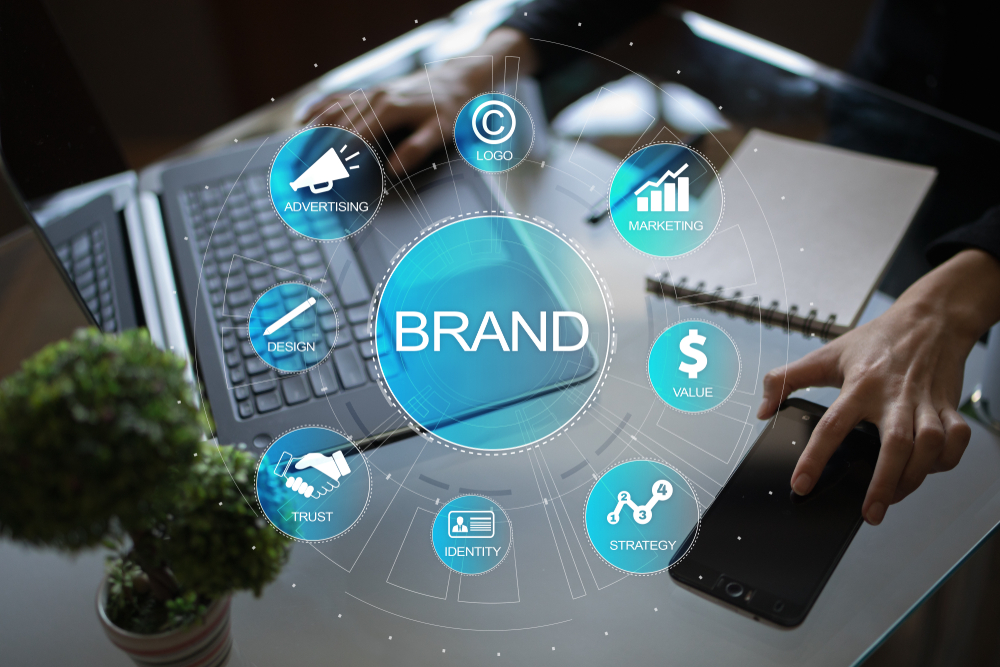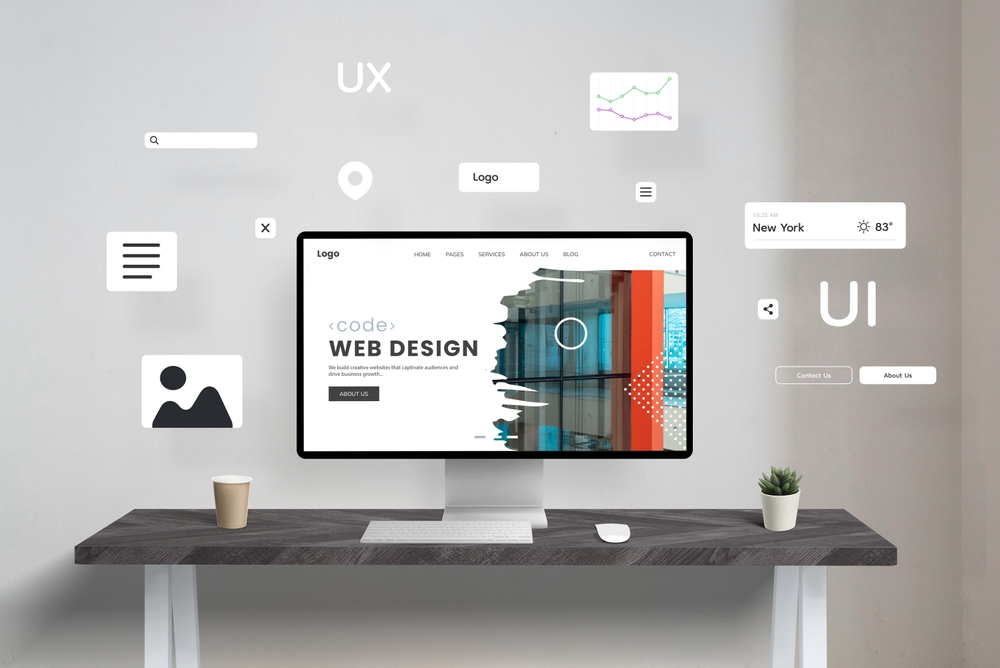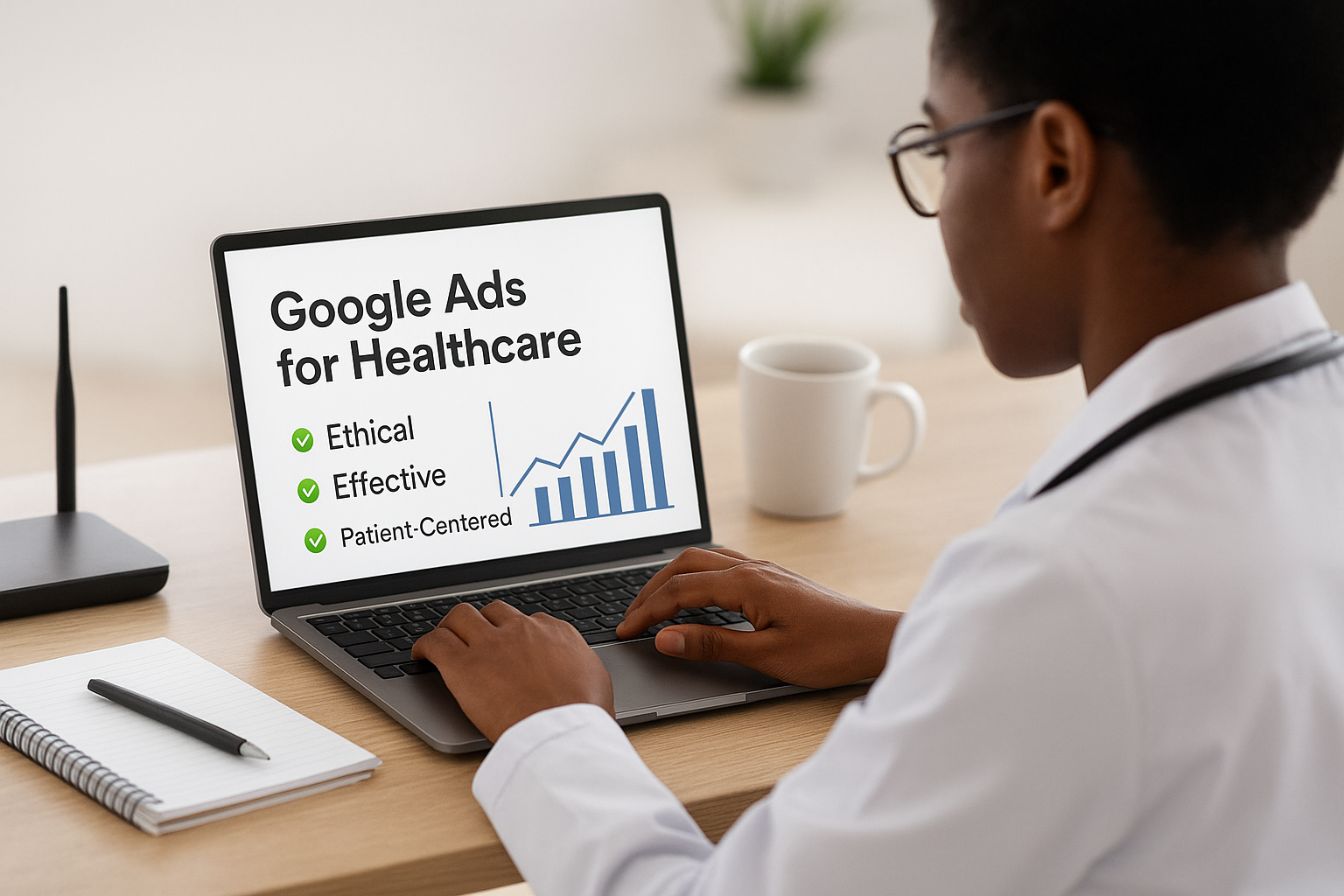The life sciences industry has undergone a dramatic digital transformation. Today’s buyers—whether researchers selecting lab equipment, hospital administrators evaluating diagnostic platforms, or pharmaceutical companies choosing CRO partners—begin their journey online, often completing 67% of their research before ever contacting a vendor.
For life science companies, this shift presents both challenges and opportunities. Long, complex sales cycles, highly technical products, multiple stakeholders, and strict regulatory constraints make marketing uniquely difficult. Yet those who master digital marketing strategies gain significant competitive advantages in reaching and engaging their target audiences.
This guide explores the most effective digital marketing strategies for life science companies in 2025, providing actionable insights to help you rank higher, reach more customers, and drive meaningful business growth.
Understanding the 2025 Life Sciences Buyer
Before diving into tactics, understand how your buyers make decisions:
The self-educated buyer: Researchers and decision-makers conduct extensive online research before contacting vendors. They read publications, watch demos, compare specifications, and seek peer recommendations across multiple digital channels.
Multi-stakeholder decisions: Purchases involve bench scientists (evaluating technical specs), lab managers (assessing reliability), procurement teams (negotiating pricing), and executives (considering strategic fit). Each stakeholder consumes different content through different channels.
Extended sales cycles: Life sciences sales cycles range from 6-24+ months, requiring sustained digital engagement throughout the buyer journey.
Trust imperative: Healthcare and research decisions carry high stakes. Your digital presence must build credibility through demonstrable expertise, transparency, and authentic engagement.
Strategy 1: Scientific Content Marketing
Content marketing in life sciences isn’t promotional—it’s educational, demonstrating expertise while providing genuine value.
Essential Content Types
Technical blog posts: Cover experimental techniques, troubleshooting guides, application spotlights, and scientific trends. Aim for depth over superficiality—2,000+ word comprehensive guides often perform best.
White papers and technical docs: Provide detailed coverage of specific challenges, include original data when possible, cite peer-reviewed sources extensively, and offer actionable conclusions. Gate high-value content strategically to capture leads.
Case studies: Feature real customers with specific results, describe challenges and solutions, use actual data and quotes, and address how you overcame obstacles. Multiple formats (written, video, infographic) serve different preferences.
Video content: Product demonstrations, technique tutorials, scientist interviews, and webinar recordings. Host on YouTube for SEO while embedding on your site. Include transcripts for accessibility.
Scientific publications: Partner with customers on peer-reviewed publications, publish validation studies, create application notes from published research, and promote publications across digital channels. According to Nature Research, publications remain highly influential in purchasing decisions.
Content Best Practices
- Balance scientific accuracy with searchable patient language
- Provide comprehensive coverage of topics
- Include author credentials and cite reputable sources
- Update content regularly to maintain freshness
- Use clear structure with descriptive headers
- Incorporate visuals to enhance understanding
Strategy 2: Account-Based Marketing (ABM)
ABM is particularly effective for life sciences’ high-value, complex sales.
Why ABM Works
Life sciences sales concentrate in a limited number of high-value accounts with multiple decision-makers and long sales cycles. ABM’s personalized, sustained engagement aligns perfectly with this reality.
Implementation Essentials
Target account identification: Select accounts based on firmographic data (size, funding, research focus), technographic data (current technology), intent signals (website behavior, content engagement), and strategic value (thought leadership potential).
Prioritize into tiers: Tier 1 (10-50 highest-value accounts), Tier 2 (50-200 high-value), and Tier 3 (200+ good-fit accounts).
Personalized engagement: Create account-specific landing pages, custom video messages, tailored case studies, and persona-specific content for different stakeholders. Orchestrate campaigns across email, LinkedIn advertising, direct mail, and sales outreach.
Technology stack: Integrate CRM (Salesforce, HubSpot), marketing automation (Marketo, Pardot), ABM platforms (6sense, Demandbase), and intent data providers (Bombora, ZoomInfo).
Success metrics: Track account engagement depth, pipeline velocity, win rates, deal size, and customer lifetime value for ABM accounts versus non-ABM.
Strategy 3: LinkedIn Marketing Excellence
LinkedIn dominates as the primary social platform for B2B life sciences marketing.
Organic LinkedIn Strategy
Company page optimization: Complete all sections, post consistently (3-5x weekly), mix content types, engage with comments promptly, and showcase products in dedicated sections.
Employee advocacy: Encourage employees to share company content, provide personal branding guidance, make sharing easy, and recognize active advocates.
Thought leadership: Publish original articles from company experts, comment on industry trends, share data-driven insights, and provide conference takeaways.
LinkedIn Advertising
Target with precision using company targeting (specific organizations for ABM), job title/function (specific decision-makers), skills (technical expertise), and matched audiences (upload lists for account-based campaigns).
Campaign types:
- Sponsored content for thought leadership and content promotion
- Sponsored messaging for direct outreach (use sparingly)
- Dynamic ads using profile data for personalization
- Text ads for cost-effective traffic generation
Continuously A/B test headlines, images, calls-to-action, and targeting while refining based on engagement and conversion data.
Strategy 4: SEO for Life Sciences
Search engine optimization ensures your target audience finds you when researching solutions.
Keyword Strategy
Target multiple keyword types:
- Product category: “next-generation sequencing,” “mass spectrometry”
- Application: “single-cell RNA sequencing workflow,” “proteomics sample prep”
- Problem-solving: “how to improve PCR yield,” “troubleshooting western blot”
- Comparison: “qPCR vs digital PCR,” “ELISA vs flow cytometry”
- Regulatory: “FDA approval process for diagnostics”
Use Google Keyword Planner, AnswerThePublic, SEMrush, or Ahrefs for research. Incorporate insights from sales teams about common questions.
Technical SEO Essentials
- Optimize site speed through image compression, code minification, and quality hosting
- Ensure mobile responsiveness (60%+ of searches occur on mobile)
- Implement schema markup (Medical Business, Physician, Review, FAQ schemas)
- Create XML sitemaps and submit to Google Search Console
- Use descriptive URLs with keywords
- Optimize title tags, meta descriptions, and header hierarchy
Content Optimization
Create comprehensive content (2,000-3,000+ words for technical topics), include author credentials, cite peer-reviewed sources, use internal linking, optimize images with alt text, and maintain content freshness through regular updates.
Link Building
Build quality backlinks through:
- Original research and data publications
- Digital PR targeting scientific media
- Guest posting on industry blogs
- Conference speaking (websites link to speakers)
- Academic partnerships
- Industry association memberships
- Resource page targeting
According to Moz, authoritative backlinks from relevant domains remain crucial ranking factors.
Strategy 5: Email Marketing That Nurtures
Email remains highly effective for B2B life sciences marketing.
List Building and Segmentation
Build lists through gated content downloads, webinar registrations, newsletter subscriptions, conference leads, and demo requests. Maintain quality through regular list hygiene.
Segment by company type (academia, pharma, biotech, diagnostics), role (researcher, lab manager, PI, procurement), research area, product interest, funnel stage, and engagement level.
Campaign Types
- Newsletters: Regular updates with curated content and news
- Nurture sequences: Automated series guiding prospects through the buyer journey
- Product launches: Announcements and education about new offerings
- Event promotion: Webinar invitations and conference reminders
- Educational series: Deep dives into specific topics
- Customer retention: Keep existing customers engaged
Best Practices
Keep subject lines under 50 characters, create curiosity without clickbait, personalize beyond just names, and A/B test regularly. Design emails with clear layouts, single primary CTAs, mobile-responsive design, and value-focused messaging. Maintain sender reputation through domain authentication (SPF, DKIM, DMARC) and high engagement rates.
Track open rates (15-25% for B2B), click-through rates (2-5%), conversion rates, unsubscribe rates (under 0.5%), and email-influenced pipeline.
Strategy 6: Virtual Events and Webinars
Virtual events have become permanent fixtures in life sciences marketing.
Webinar Excellence
Webinars allow technical depth (45-60 minutes), live demonstrations, expert access, global reach, and on-demand value through recordings.
Topic selection: Address genuine pain points—new techniques, troubleshooting challenges, emerging applications, data analysis, and regulatory guidance.
Speakers: Feature internal experts, customer scientists, key opinion leaders, and application specialists.
Promotion timeline: Announce 4-6 weeks before, intensive promotion 2-3 weeks out, reminders one week and one day before, and day-of emails with join details.
Engagement tactics: Use polls, Q&A sessions, chat interaction, live demonstrations, and downloadable resources.
Post-webinar: Send recordings immediately (even to no-shows), share slides and resources, follow up with engaged attendees, segment leads by engagement, and alert sales to high-intent participants.
Technology Platforms
Choose based on needs: Zoom Webinars (straightforward presentations), ON24 (advanced features and analytics), Hopin (conference-style events), or GoToWebinar (ease of use).
Strategy 7: Leveraging AI and Automation
Artificial intelligence transforms B2B marketing efficiency and effectiveness.
AI Applications
Personalization: Dynamic content delivery based on user behavior, predictive lead scoring, optimal send time determination, and content recommendations.
Chatbots: Answer common technical questions, qualify leads, route to appropriate resources, and provide 24/7 availability.
Marketing automation: Create behavior-triggered campaigns, multi-touch nurture programs spanning months, automated lead lifecycle management, and sales alerts for high-intent accounts.
Predictive analytics: Identify churn risk, spot upsell opportunities, recommend next best actions, and forecast campaign performance.
Ethical Considerations
Ensure data privacy compliance (GDPR, CCPA), mitigate AI bias through regular audits, maintain transparency about AI usage, and implement human oversight for content and decisions.
Strategy 8: Customer Marketing and Advocacy
The most successful companies excel at customer marketing, not just acquisition.
Why Customer Marketing Matters
Retained customers generate higher lifetime value, expansion revenue, referrals, reference value, product feedback, and lower costs compared to new customer acquisition.
Engagement Strategies
Customer communications: Dedicated newsletters with product tips, new features, training resources, success stories, and company updates.
User communities: Online forums, annual user conferences, regional meetups, social media groups, and peer-to-peer support channels.
Education programs: On-demand training, live webinars, certification programs, advanced workshops, and troubleshooting resources.
Building Advocacy
Create formal advocacy programs with recognition opportunities, exclusive access, speaking opportunities, and advisory board participation. Develop systematic case study processes, encourage reviews on relevant platforms, and maintain strong relationships with reference customers.
Strategy 9: Data-Driven Marketing
Success requires continuous measurement and optimization.
Essential Metrics
Top-of-funnel: Website traffic by source, content engagement, social reach, event registrations, email list growth.
Mid-funnel: Marketing qualified leads (MQLs), lead-to-MQL conversion rate, content consumption per lead, email engagement.
Bottom-funnel: Sales qualified leads (SQLs), MQL-to-SQL conversion, opportunities created, pipeline value influenced, win rates.
Customer metrics: Customer acquisition cost (CAC), customer lifetime value (CLV), CLV:CAC ratio, expansion revenue, churn rate, net promoter score (NPS).
Attribution Modeling
Use multiple attribution models to understand impact: first-touch, last-touch, multi-touch linear, time-decay, U-shaped, W-shaped, or custom models based on your buyer journey.
Technology Stack
Integrate CRM (Salesforce, HubSpot), marketing automation (Marketo, Pardot), web analytics (Google Analytics 4), BI tools (Tableau, Looker, Power BI), and call tracking for comprehensive measurement.
Navigating Regulatory Compliance
Life sciences marketing must navigate complex regulations.
FDA Regulations (US)
For FDA-regulated products, marketing must align with cleared/approved indications, present balanced risks and benefits, substantiate all claims, include required disclosures, and monitor promotional materials. Digital-specific considerations include character limitations not exempting disclosure requirements and third-party content potentially requiring monitoring.
Resources: FDA guidance documents on promotional practices.
European Union and Global
GDPR compliance: Explicit consent for marketing, right to access/correct/delete data, processing transparency, and breach notification.
MDR/IVDR: Stricter requirements for medical device and diagnostic claims.
Global considerations: Different countries have varying registration, approval, language, and cultural requirements.
Best Practices
Work with regulatory affairs on all materials, implement review and approval workflows, document claim substantiation, train marketing teams on regulations, monitor regulatory changes, and consider consultants for complex situations.
Creating Your 2025 Action Plan
Situation Analysis
Assess current marketing performance, competitive landscape, target audience needs, technology gaps, budget constraints, and business goals. Conduct SWOT analysis identifying strengths, weaknesses, opportunities, and threats.
Setting SMART Objectives
Create Specific, Measurable, Achievable, Relevant, and Time-bound goals. Examples:
- Generate 2,000 MQLs in 2025 (50% increase)
- Achieve 30% organic traffic growth
- Increase marketing-influenced pipeline by $15M
- Improve MQL-to-SQL conversion from 15% to 22%
- Reduce cost per lead by 20%
Budget Allocation
Typical life sciences B2B allocation:
- Content creation: 20-25%
- Digital advertising: 15-20%
- Events and webinars: 15-20%
- Marketing technology: 10-15%
- SEO and website: 10-15%
- Agency/external resources: 10-15%
- Data/research: 5-10%
- Contingency: 5-10%
Quarterly Roadmap
Q1: Foundation—finalize plans, optimize technology, develop content calendar, launch priority campaigns, establish baselines.
Q2: Momentum—scale successful initiatives, launch new programs, prepare for conferences, conduct mid-year reviews.
Q3: Optimization—analyze performance, optimize underperforming programs, plan Q4 acceleration.
Q4: Acceleration—final push on goals, holiday campaigns, 2026 planning, team retrospectives.
Conclusion
Life sciences marketing success in 2025 requires scientific credibility, multi-channel presence, personalization at scale, long-term thinking, data-driven optimization, customer-centricity, regulatory awareness, agility, and integration across functions.
The companies that will dominate aren’t necessarily those with the best products—they’re those combining excellent science with excellent marketing. They understand that being found, being credible, and being helpful are as important as having superior technology.
Start with fundamentals, build on what works, and continuously evolve. Test, learn, iterate. The strategies in this guide provide a roadmap—now it’s time to execute.
Your 2025 success starts with commitment to excellence, learning, your customers, and the scientific mission driving your company forward. The patients are searching. Make sure they find you.
References
- Nature Research. (2024). “Scientific Product Purchasing Decisions: Survey Report.” Retrieved from https://www.nature.com/
- U.S. Food and Drug Administration. (2024). “Guidance for Industry: Promotional Materials.” Retrieved from https://www.fda.gov/
- Moz. (2024). “The Beginner’s Guide to SEO.” Retrieved from https://moz.com/learn/seo
- Google Search Console. (2024). “Webmaster Resources and Tools.” Retrieved from https://search.google.com/search-console/
- LinkedIn Business Solutions. (2024). “B2B Marketing Benchmarks Report.” Retrieved from https://business.linkedin.com/
- Content Marketing Institute. (2024). “B2B Content Marketing: Benchmarks, Budgets, and Trends.” Retrieved from https://contentmarketinginstitute.com/
- Gartner. (2024). “The Future of B2B Buying: Digital-First Trends.” Gartner Research.
- HubSpot Research. (2024). “The State of Marketing Report.” Retrieved from https://www.hubspot.com/
- McKinsey & Company. (2024). “The Next Normal for Pharma Commercial Models.” McKinsey Insights.
- Salesforce. (2024). “State of Marketing: Life Sciences Edition.” Salesforce Research.
- Deloitte. (2024). “Life Sciences Outlook: Digital Transformation in Healthcare.” Deloitte Center for Health Solutions.
- Pharmaceutical Research and Manufacturers of America (PhRMA). (2024). “Marketing Guidelines.” Retrieved from https://www.phrma.org/
- ZoomInfo. (2024). “B2B Marketing Data and Intent Signals Report.” Retrieved from https://www.zoominfo.com/
- IQVIA. (2024). “Digital Marketing in Life Sciences: Best Practices.” IQVIA Institute Reports.
- Journal of Medical Internet Research. (2023). “Digital Marketing in Healthcare: A Systematic Review.” JMIR Publications.




